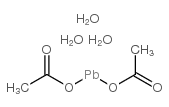| 结构式 | 名称/CAS号 | 全部文献 |
|---|---|---|
 |
醋酸铅
CAS:6080-56-4 |
|
 |
E3330
CAS:136164-66-4 |
| 结构式 | 名称/CAS号 | 全部文献 |
|---|---|---|
 |
醋酸铅
CAS:6080-56-4 |
|
 |
E3330
CAS:136164-66-4 |